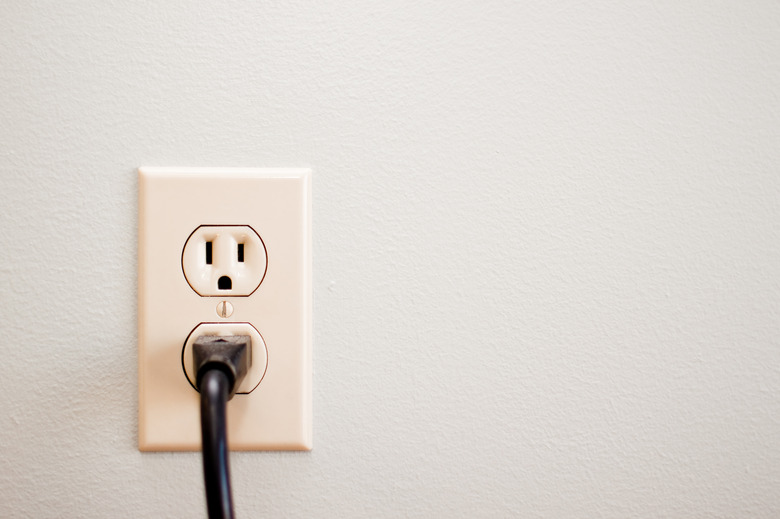How To Add An Electrical Outlet In The Middle Of The Run
We may receive a commission on purchases made from links.
When considering the adding an electrical outlet in the middle of a run, the wiring itself is the most important factor. Carpentry work will be required if the path of the new outlet wire needs to run through wall studs or between floor and baseboard areas. Once you have decided on the location and any carpentry work has been completed, the outlet can be added in the middle of the existing circuit run. Homeowners with basic electrical wiring knowledge can do the work with a few tools and materials.
Before You Begin
Before You Begin
Test an existing outlet on the circuit intended for the additional outlet using a 120-volt tester. Once power is verified, turn off the electrical power to the wiring circuit. Test the same outlet for absence of power using the tester. Verify that no power is present in the circuit.
Work safely with electricity. Inform other members of your household that you will be working with receptacle wiring before you begin.
Wiring an Outlet
Wiring an Outlet
Begin by cutting the sheathed cable at the place the outlet is to be installed using wire cutters. Cut the sheathing back 3 inches on both ends of the cables with a utility knife. Make a slow, deliberate cut, taking care not to score or damage the underlying insulated wires. Strip half an inch from the ends of the black and white insulated wires on both ends of the cables.
Bend open-end loops on the stripped ends of the insulated wires and the bare copper ground wires on each of the cables. Pry open two slots on either side of the electrical box using the flat-head screwdriver. Next, pull each set of wires through their respective slots into the box as far as the slack will allow.
Secure the box in the wall by turning the wing screws on either side of the box clockwise until snug. The wings will spread themselves out inside the wall as the screw is turned. Then, connect a 6-inch pigtail length of bare copper wire with each of the bare copper ground wires from the box using a wire nut. Hand-tighten by turning the nut clockwise until firm.
Bend a loop in the free end of the bare copper pigtail using needle-nose pliers. Attach the looped end of the pigtail to the green grounding post screw at the top of the duplex outlet. Tighten using the appropriate screwdriver. Make sure the open end of the loop is facing to the right.
Connect the white neutral wire to the silver-colored terminal screw on the outlet with a screwdriver. Be sure the open end of the loop is facing right. Then, connect the black hot wire to the brass screw with a screwdriver. The open end of the loop should face to the right.
Before proceeding any further, check all the terminal connections and the ground wires for security. Install the duplex outlet in the electrical box and tighten the outlet bracket screws with a screwdriver. Screws are always included with new outlets. Install one at the top and one at the bottom. Install the cover on the outlet box and tighten the screw. Take care not to over tighten the cover screw. Most are made from plastic and may crack if excessive pressure is applied.
Completing the Project
Completing the Project
Restore power to the circuit and test the new outlet with the 120-volt tester. Check the amperage load capacity on the circuit breaker used for the new outlet's circuit. Outlets that are wired with 14-gauge wire will operate on 15-amp breakers, while those wired with 12-gauge operate with 20-amp breakers.
